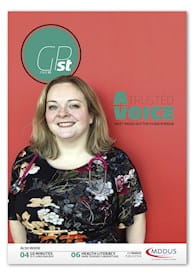
IMAGINE there was a health problem that affected nearly half the population. Those worst affected, if aged over 50, have double the chance of dying over the next 10 years. Those with diabetes have double the risk of developing complications. We would expect medicine and pharma to pull out all the stops to find a solution.
However, this health problem isn’t fixed with a pill. It’s a problem we call health literacy – a difficulty of making sense of health issues and healthcare. This leads to insufficient confidence, knowledge, understanding and skills to cope with the demands and expectations that health and healthcare places on people, making it hard for them to safeguard their own wellbeing and those they look after.
We don’t make it easy for people. Studies have shown that the information on a bottle of paracetamol, to calculate a childhood dose, is pitched at a literacy and numeracy level that would stretch 43 per cent of working age adults. As doctors, we unwittingly talk in words and use technical terms (jargon) that many of our patients are unfamiliar with, so that, on average, only half of what a person hears in a consultation is remembered and only half of that is understood.
This is particularly challenging for those with low educational attainment, the elderly, where the professional and patient don’t share the same first language, those in pain, unwell or just frightened. People are too polite or ashamed to admit they don’t understand and as doctors we consistently overestimate people’s health literacy. As George Bernard- Shaw famously said: “the single biggest problem with communication is the illusion that it’s taken place”.
This can have a massive impact on the safety and effectiveness of healthcare, makes shared decision making and informed consent a real challenge, undermines selfmanagement, and raises significant rights, health equity and medicolegal issues. Responding to people’s health literacy needs is an important aspect of person-centredness and a challenge for us all. It’s no coincidence that it is a significant theme in Realising Realistic Medicine, the Chief Medical Officer for Scotland’s annual report for 2015/16.
Between 2011 and 2016, I was privileged to work on this agenda within Scottish Government. Scotland was becoming one of the first countries in the world to see health literacy as a significant priority. Working with some inspiring pioneers we developed an action plan, called Making it Easy. This aimed to increase awareness amongst health professionals to meet people’s hidden health literacy needs whilst building their capabilities to respond. We developed a website, the Health Literacy Place, which has useful evidence, tools and resources.
As GPs, what practical things can we do to be responsive to people’s health literacy needs?
1. Preparing people before consultations. It’s difficult for people to take in information and then be expected to reach a shared decision at the same consultation. Giving people the same information that you have about them, in meaningful formats (lab results, blood pressure readings, correspondence etc) a few days before a consultation is very valuable. This is a key principle of care and support planning for people with long term conditions and helps engagement, understanding and improves outcomes.
2. During consultations. Encourage a family member or friend to attend the consultation (with the patient’s consent). Use simple, jargon-free (or clarified jargon) language. Check the person’s understanding by using “teach back.” This is where we ask the patient in a nonstigmatising way to explain to us what they have understood in the consultation. It can be highly informative. Often, they have understood and explain back in everyday language. It also gives you instant feedback about your own communication skills. People feel more confident they have heard you correctly if you have checked their understanding. Sometimes it’s clear the person hasn’t understood and a signal they will need more time and help. Use “chunk and check”, this is where we break down information into bite-size concepts and then check understanding using teach back before moving onto another concept.
3. After the consultation. If people go home with a summary of their consultation, or even an audio recording, it helps understanding and confidence. Written information such as patient information leaflets have proved disappointing for people with poor literacy so signposting them to sources of support such as other members of the team, peers and self-management support can be helpful.
4. Organisationally. Review your practice systems. Giving people forms to fill in can be challenging, particularly for those with basic reading and writing difficulties. Ask your receptionists to routinely ask if they would like help to fill in forms. Use patient volunteers to sense-check information in your waiting rooms or letters you send out. Use few words and keep it visual.
Good health literacy practice can be hugely illuminating and rewarding. It lies at the heart of engaging and enabling our patients to be in the driving seat of their health.
Dr Graham Kramer is a GP principal in Montrose and former Scottish Government national clinical lead for self-management and health literacy
Links:
- Making it easy
- The Health Literacy Place – www.healthliteracyplace.org.uk
This page was correct at the time of publication. Any guidance is intended as general guidance for members only. If you are a member and need specific advice relating to your own circumstances, please contact one of our advisers.
Read more from this issue of Insight Primary

Save this article
Save this article to a list of favourite articles which members can access in their account.
Save to library


